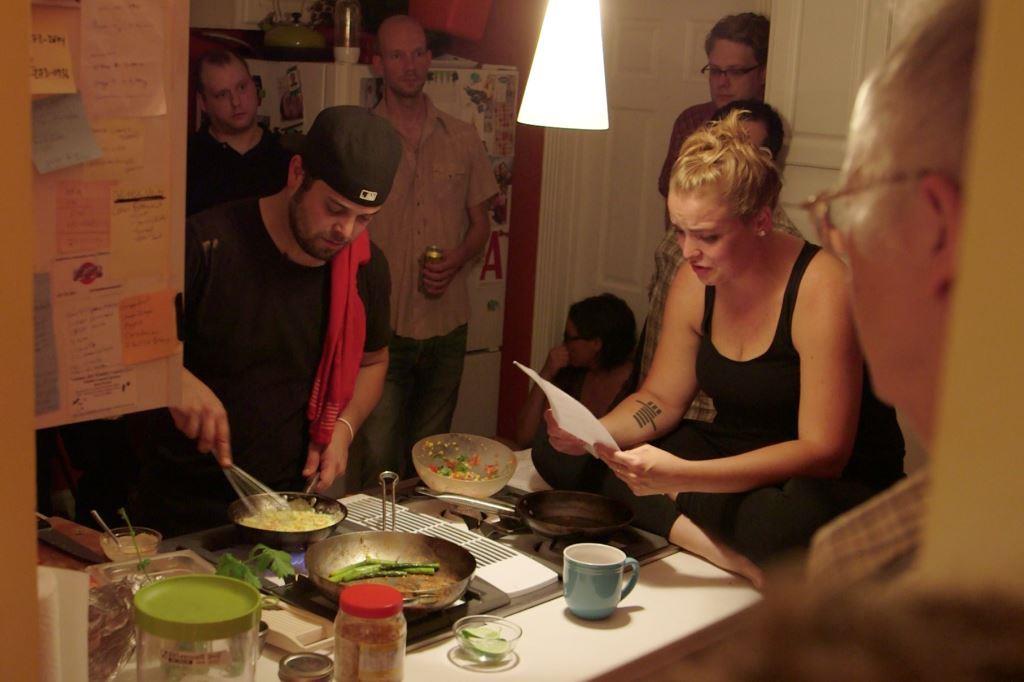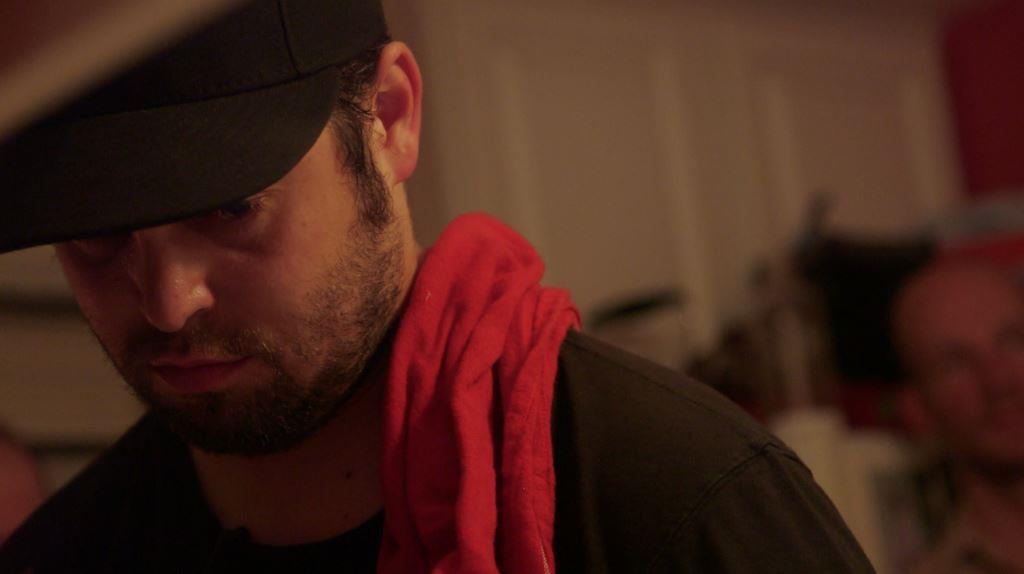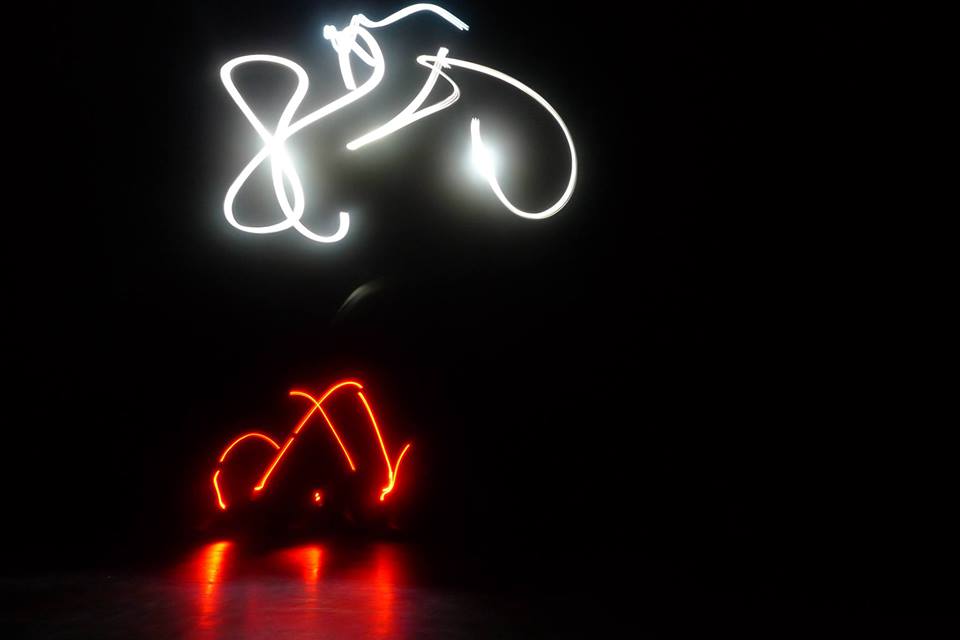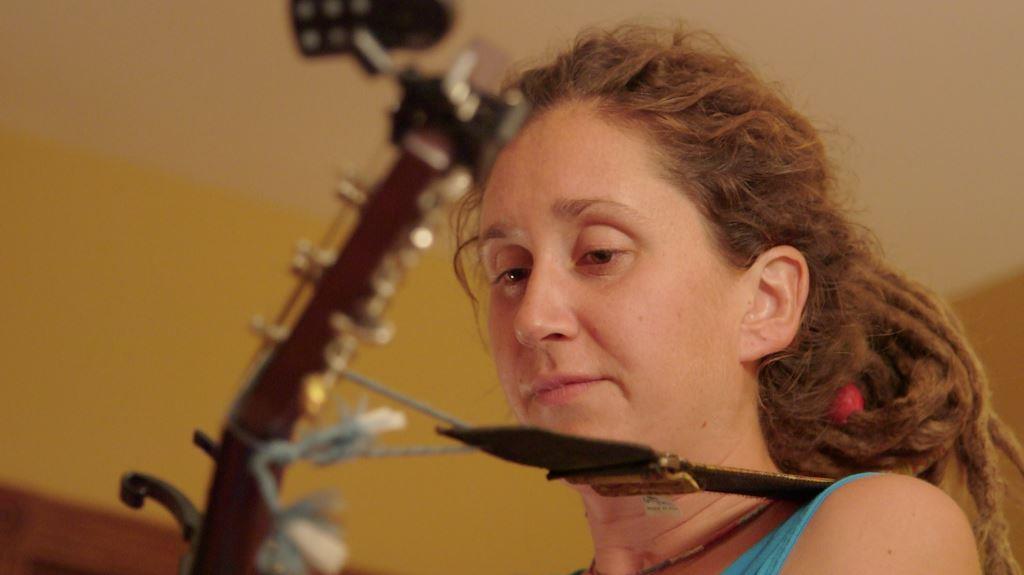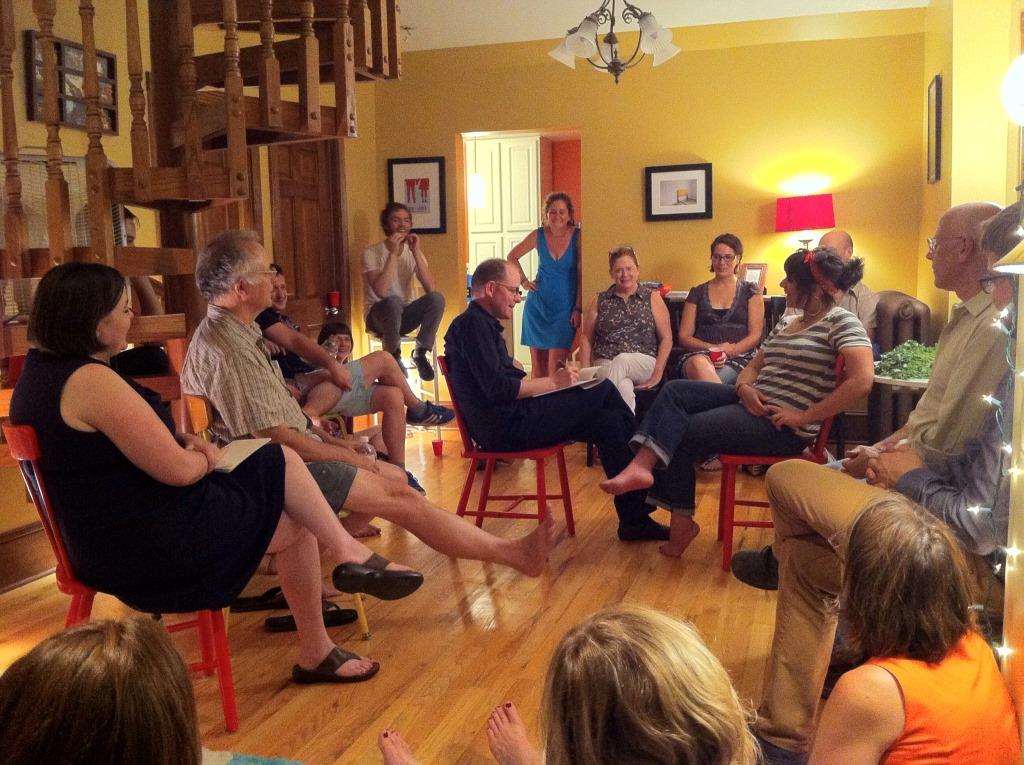
Inside the living room performances of “Small Art 3”
Charles Campbell interviews a volunteer from the audience in “Small Art 3.” Photo courtesy of Ben McGinley
Last Thursday, I was sweating out the hot night with 30-or-so others in the second floor apartment of a Cathedral Hill neighborhood duplex, watching the quiet works of “Small Art 3.” And it might just have been the most moving show I’ve seen yet this year. We’d gathered in the home of artists Laura Holway and Ben McGinley to watch a trio of short performances: a wrenching, personal piece about the break-up of a three-year relationship, by Bedlam Theatre’s Lucas Koski and Samantha Johhs; two hugely engaging, very different bits by Skewed Visions’ co-founder Charles Campbell; and some unabashedly earnest folk tunes by singer/songwriter Kristen Graves.
There were no tickets to buy, just a Facebook event notice to which we’d RSVP-ed; the evening of, a couple of donation buckets were set out so audience members could leave a bit of cash to pay the artists. Fortified with homemade chocolate chip cookies, wine and ginger beer, we in the audience arranged ourselves on the couches, benches and various chairs set out for us in the couple’s living room.
Samantha Johns and Lucas Koski in a kitchen performance at “Small Art 3.” Photo courtesy of Ben McGinley
I’ve been thinking on that night for nearly a week now, and I still find it almost impossible to capture what we saw in a way that feels adequate to the experience. The works didn’t fall into a neat theme, and there aren’t really program notes to share or specific plot points to consider. Koski and Johns performed something like a two-part wake for the death of their couple-hood, culminating in her reading from a love letter, the kind she wished for years he’d write for her. As she recounted the particulars of her anguish and pleasure from their time together, he cooked her favorite meal, shrimp tacos, in silence. And then they ate. The rest of us watched them at it, surrounding the couple in the apartment’s kitchen — wiping tears sometimes, shifting awkwardly from one foot to the other and sweating from the close heat of the cooking, voyeurs on a dissection of affections irretrievably misspent but still deeply mourned.
It sounds excruciating described this way, doesn’t it? But believe me when I tell you: It was a rare and humane experience to share with them, as well. The stakes of this performance felt real, and high. It hurt to watch them in the same way Dolly Parton’s “Jolene” hurts to hear; their naked regret was painful in the way Loudon Wainwright’s confessional songs are painful to listen to. The longing in the couple’s byplay was theirs, but resonant with our aches, too.
Lucas Koski in “Small Art 3.” Photo courtesy of Ben McGinley
Campbell began with a deceptively simple routine: He interviewed a volunteer from the audience (a woman funny enough, as it turned out, that she threatened to steal the show). He challenged her to complete candor, asking her to answer questions on a range of topics: from the basics of her name and address to details about her personal habits, her hygiene, her opinions on Syria. His questions were simple; he offered no commentary on her responses, beyond a well-timed raised eyebrow here and there. But the sum of insight, the cumulative intimacies and pleasure of the exchange, were surprising for their intensity. In the evening’s second act, Campbell danced in the dark to Genesis’ “Invisible Touch.” With bicycle lights duct-taped to his ankles, wrists and forehead – his low-fi movement and light show was inventive and witty and wholly delightful.
Charles Campbell performing his dance made for Tara King’s 30th birthday party, to Genesis’ “Invisible Touch” “July 15, 1983” (July 15, 2013), which he reprised for “Small Art 3.” Photo by Sean Smuda
Touring musician and activist Kristen Graves offered a welcome interstitial respite: earnest and warm, with spare acoustic guitar and a gentle alto rasp. Her heartfelt idealism would risk sounding tinny in a larger space, but in that living room, less than five feet from us, her flower child invitations to a better world felt warm as a campfire – like a balm rather than treacle.
I’ve found myself thinking again and again about how much the venue, the vibe of the crowd, tinges the subtextual rules of engagement between performers and audience. Buy a ticket, and take a seat in the Guthrie Theater, the Ordway or the Southern, and the understanding is you’ve bought yourself an art-experience-as-product. It’s still art, no doubt, but it’s art of a highly processed sort. A specific set of expectations inevitably follows that box office transaction: One expects to be anonymous in the audience, to be entertained by what’s on stage; to see talent and stagecraft that’s been polished to a high sheen; one wants an escape from the everyday. Buttressed by an army of behind-the-scenes professionals, the resulting work in such venues is slick, likely even effective, theater. But the measure of the work, as produced for such institutional venues, is gauged according to the metrics of product reviews – Thumbs up or thumbs down? Is this show worth the price of admission? Would you recommend this hit to a friend?
Kristen Graves at “Small Art 3.” Photo by Ben McGinley
In that homey living room, watching the “Small Art” artists perform work for themselves, for us and each other, it seemed to me to be performance of an entirely different kind than you see in more traditional venues; it’s theater stripped down to fundamentals. The metrics for success in these sorts of shows are impossible to quantify in tidy, fungible categories: what matters here are the costs and benefits of candor and love, and the attendant vulnerabilities of both. And we, watching these artists, were game from the outset – uncomfortable sometimes, yes, but willing to sit in that discomfort for the sake of being witness to something authentic. The living room rules of engagement allow room for play, for an anything-goes ethos that invites experimentation in a way an established venue just can’t without risking the alienation of paying customers.
Holway and McGinley, the artists curating the “Small Art” series of performances from their home, say there’s a Facebook page coming, for those interested in attending future events. In the meantime, find out about last week’s “Small Art 3” show here: https://www.facebook.com/events/710039572344604/.
Recent Content
-
Artsarticle ·
-
Artsarticle ·
-
Artsarticle ·
